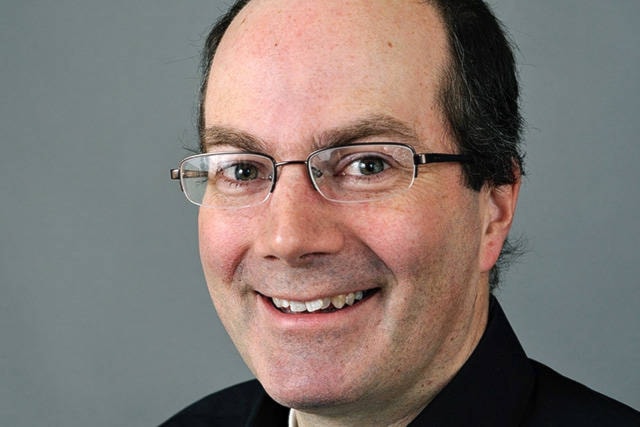Monday’s “double-tie” election is generating some free publicity for the Yukon as Outside news agencies scramble to find someone to interview.
For once, something other than a lynx trying to eat someone’s cat has got us onto the global stage.
As this column was written, the vote in Old Crow was still tied 78-78 between the NDP and Liberals, and the Liberals and Yukon Party were tied in the overall seat count at eight MLAs each.
The vote count had more than the usual drama, as knife-edge leads swung back and forth in multiple ridings throughout the evening. If you left the screen for a minute to grab another beverage, by the time you got back someone else seemed to be headed for the premier’s swivel chair.
And, as usual, the results caused proponents of proportional representation to throw their West Coast pale ales at the screen in outrage.
A quick look at the numbers from Elections Yukon’s interim report highlights several anomalies created by our first-past-the-post voting system.
The Yukon Party won the popular vote by a substantial margin, notching up 39 per cent versus 32 per cent for the Liberals. That’s 7477 votes compared to 6142 for the Liberals and 5356 for the NDP. Yet they ended up tied with the Liberals for seats, and if Old Crow bounces the Liberal way they will end up in second place.
The NDP won 28 per cent of the vote, but only 11 per cent of the seats (16 per cent if they win Old Crow). The NDP ran a spirited campaign, yet they only improved their take of the popular vote by two percentage points over 2016 and came in a distant third in seats.
Another way to think about it is that, excluding Old Crow, there were 2,639 NDP voters per NDP MLA. Meanwhile, every 758 Liberal voters got an MLA.
In the 2016 election, it took just 39 per cent of the vote to give the Liberals a majority government for five years — and full control over $7 billion in transfer payments during that period. This time, 39 per cent was not enough for the Yukon Party to seize control thanks to how its votes were distributed.
The parties will now be haggling and jostling for position. The NDP can play kingmaker and put either the Liberals or Yukon Party in power, especially if they win Old Crow. Even if not, two NDP MLAs plus nine Liberals would make for an 11-8 majority. That’s enough to win votes even if the Speaker is drawn from the Liberal Party. On the other hand, eight Yukon Party MLAs plus two NDP votes is enough for a slim 10-9 majority. This majority would be wafer thin if the Speaker came from the Yukon Party, creating a 9-9 situation where the Speaker would have to break the tie on every vote.
If a cabinet minister’s truck didn’t start and they missed a key vote, the government would fall.
There has been talk around the capital city of a formal coalition government. A Liberal-NDP coalition might seem natural. But, in the Yukon, the NDP and Yukon Party can be closer than some might think. This is why Dennis Fentie was able to flit so effortlessly from the NDP caucus to leadership of the Yukon Party.
But I’ll be surprised to see a formal coalition. These can turn out badly for the junior partner. You get a small share of power, and maybe a few platform promises implemented, but it makes it hard to run a popular, insurgent campaign against the government in the next election. Being a junior partner can either enrage or demoralize your base.
The UK’s Liberal Democrats were handed a devastating rebuke in 2015 by British voters after their coalition with the Conservatives. In British Columbia, the Greens agreed to a formal Confidence and Supply Agreement supporting the NDP government. When the moment was right, the NDP ended this partnership and called an election in 2020. Voters gave the NDP a majority and relegated the Greens to the political footnotes.
Tactical alliances are more likely, where the NDP supports the government on a piecemeal basis. But in return for what? It will all depend on which leader is a better poker player. Will the NDP agree to support one of the bigger parties in return for a boost to this or that social program? Or will they hold out for a game-changer, like insisting on proportional representation for the next election?
It will also be interesting to see what happens to the three leaders. All had their strengths, but none delivered the kind of performance that insulates a leader from grumbling from the base. The NDP’s Kate White only managed to boost the party’s popular vote standing by two points, gaining at most one additional seat if Old Crow swings her way. The Yukon Party’s Currie Dixon took precious time to announce candidates in key ridings and ramp up campaign momentum. The Liberal’s Sandy Silver somehow lost seven points of popular vote, only beating the NDP by four points, despite borrowing large sums to ramp up government spending and the Yukon bubble being quite successful.
As they reflect on their election performances, which of them will be keen for a do-over election sometime soon?
Until the next election, whenever that will be, you can expect all the parties to continue campaigning. They amazed voters with a smorgasbord of costly promises during the campaign. This will continue as they position themselves for the next election.
Which reminds us that there actually was one clear winner from Monday’s election: the bank that lends the Yukon government the money to finance its growing debt.
Keith Halliday is a Yukon economist and author of the MacBride Museum’s Aurore of the Yukon series of historical children’s adventure novels. He is a Ma Murray award-winner for best columnist and received the bronze for Outstanding Columnist in the 2019 Canadian Community Newspaper Awards.
